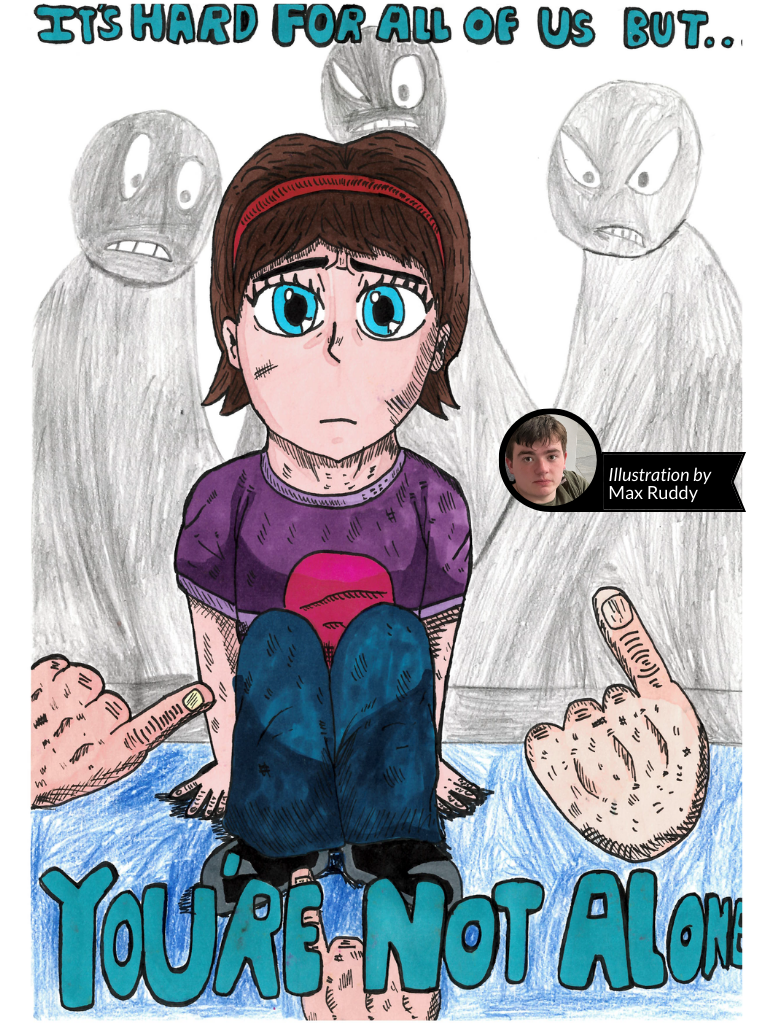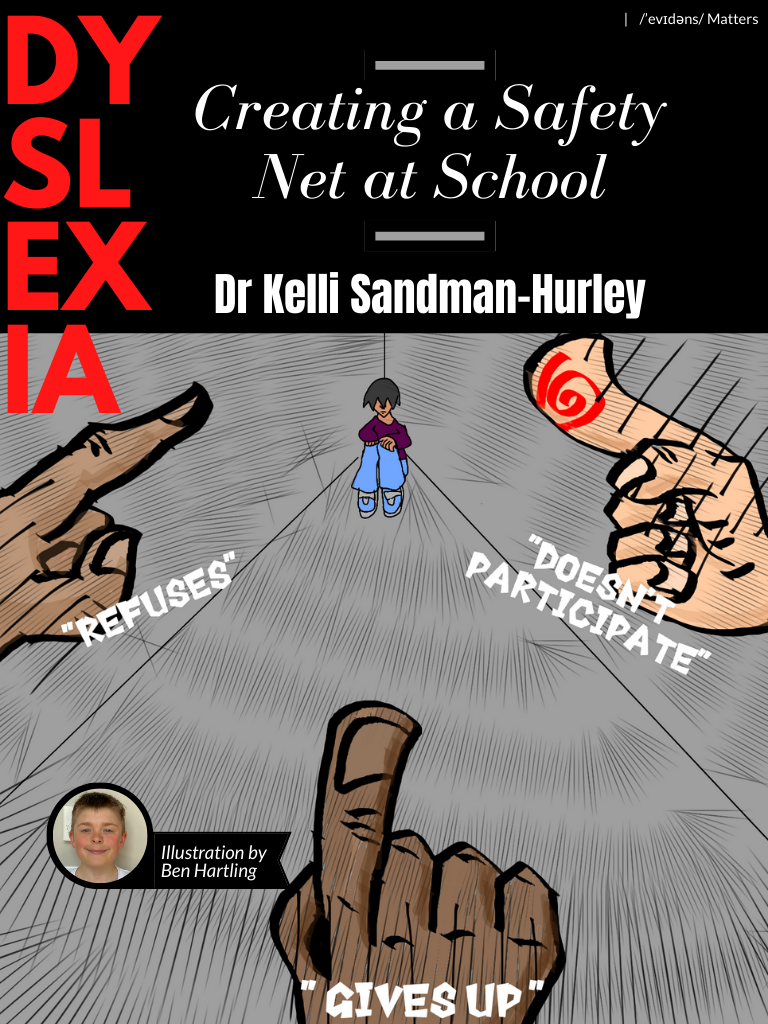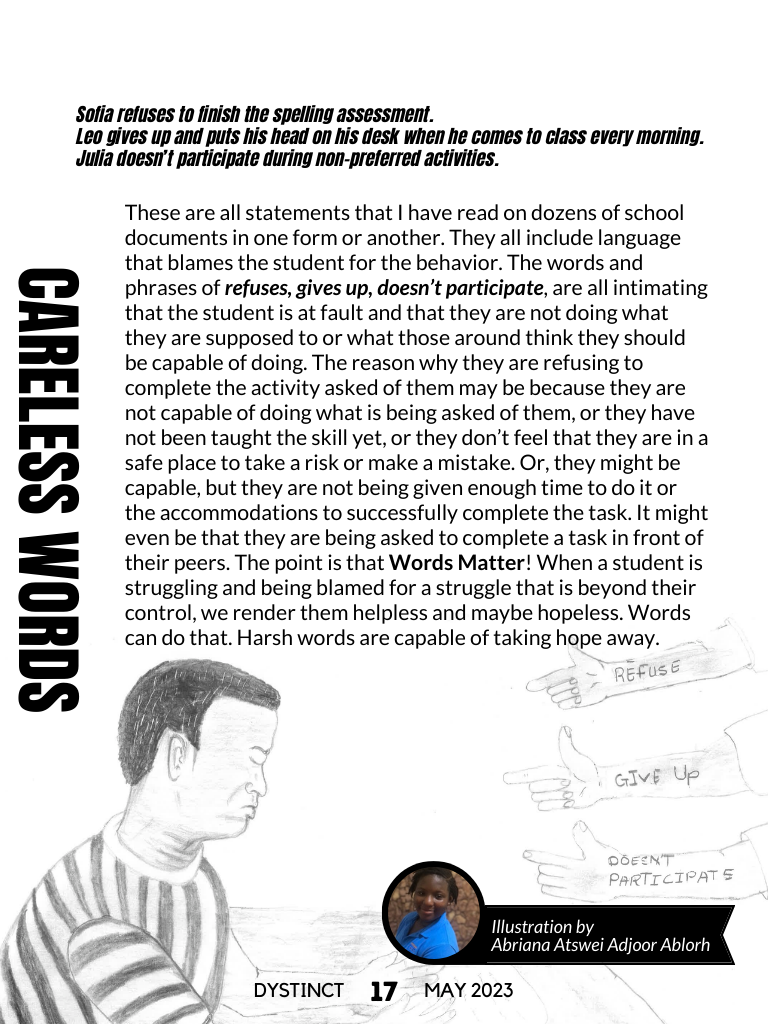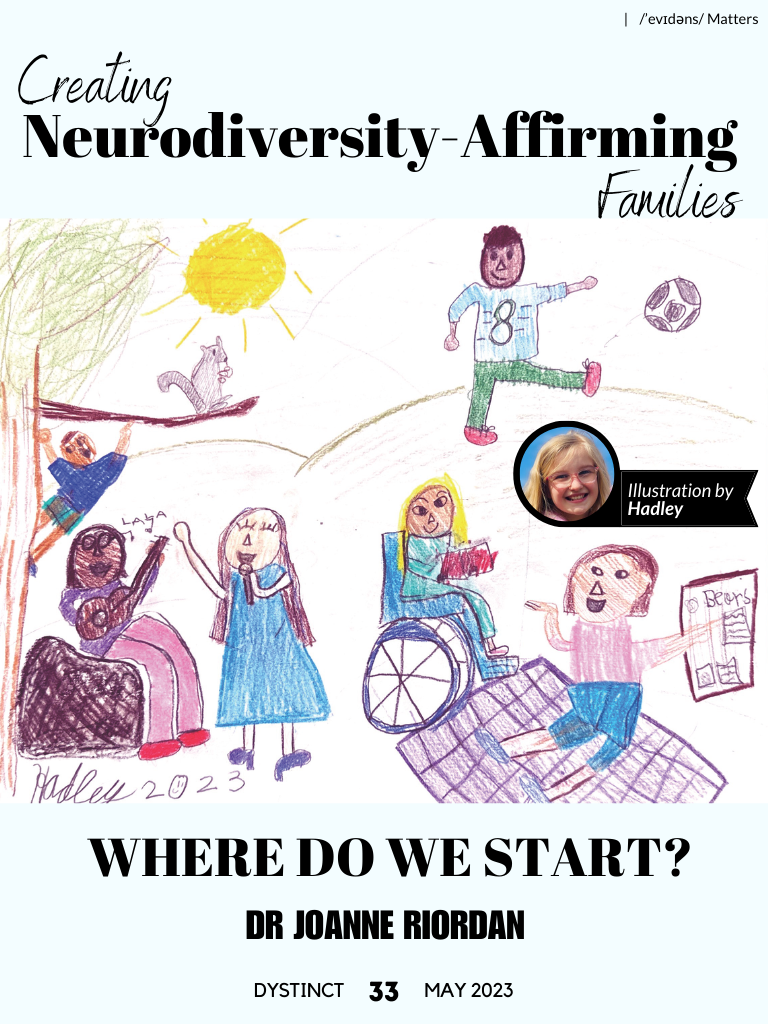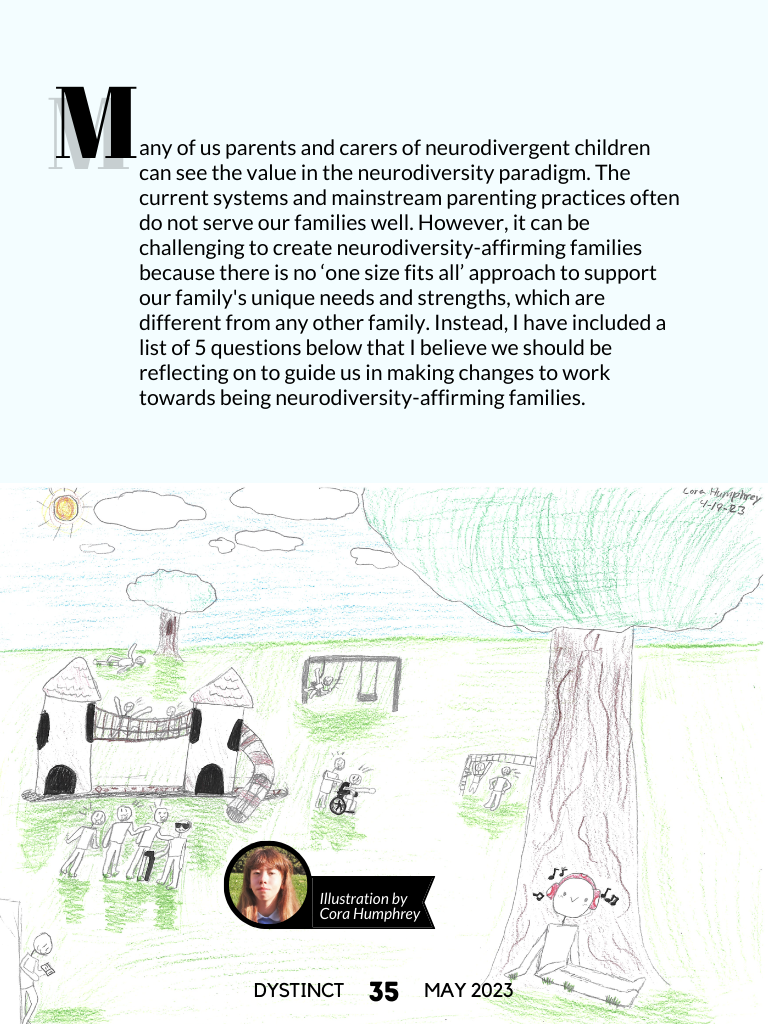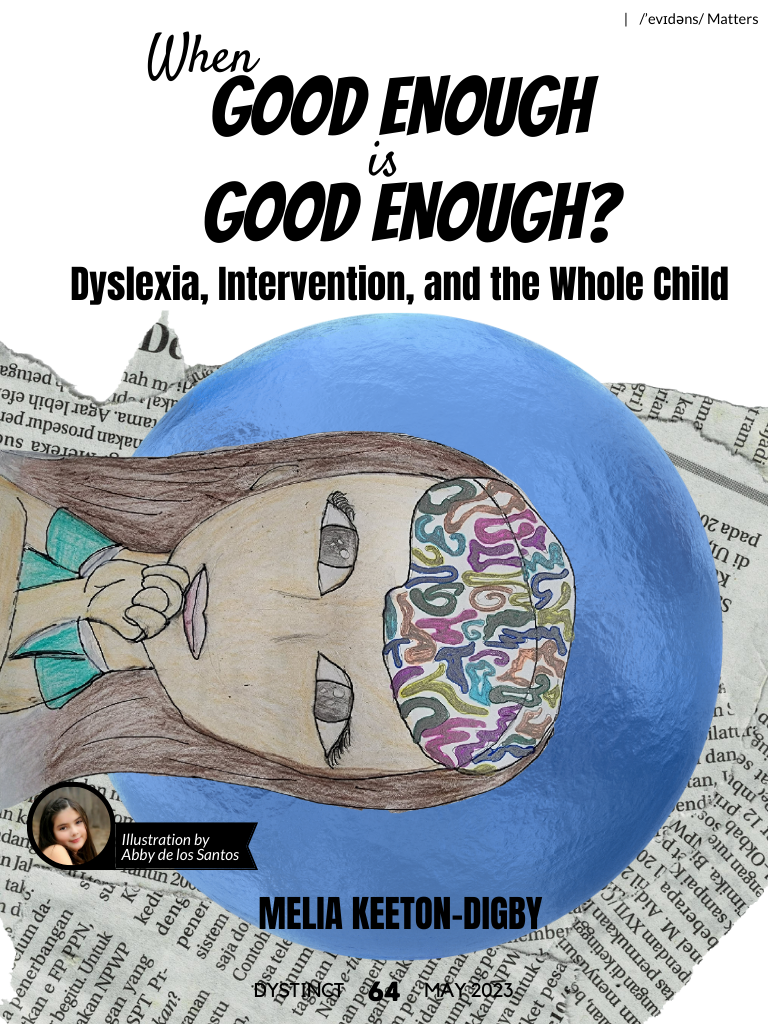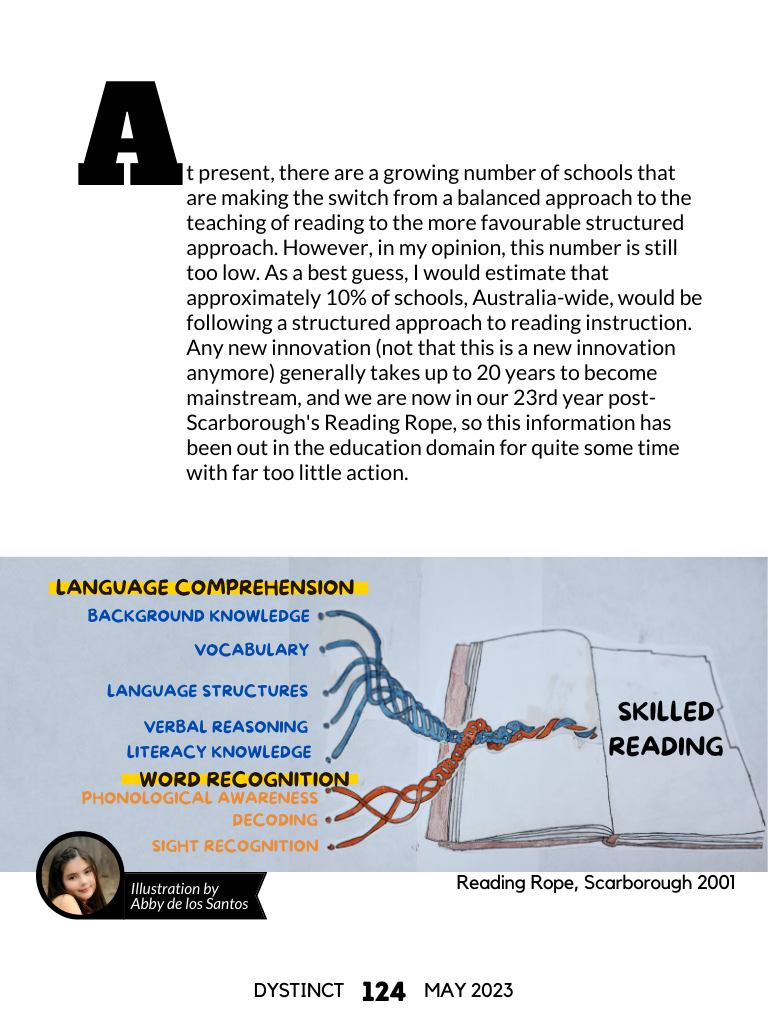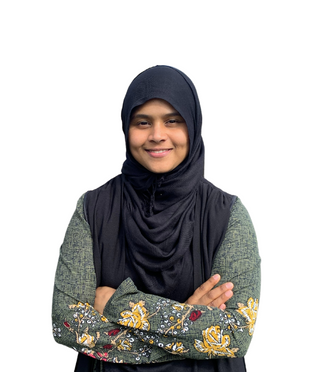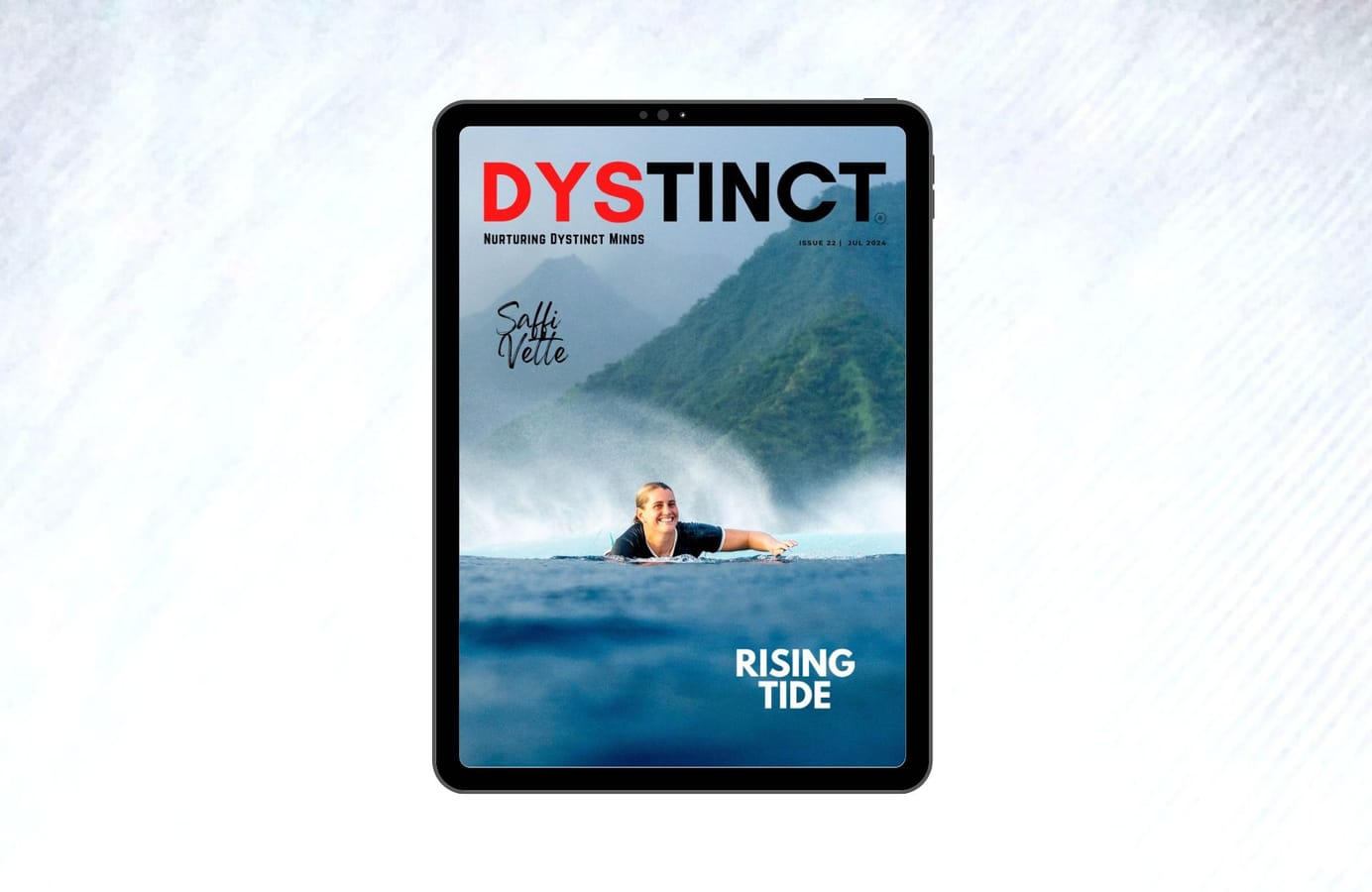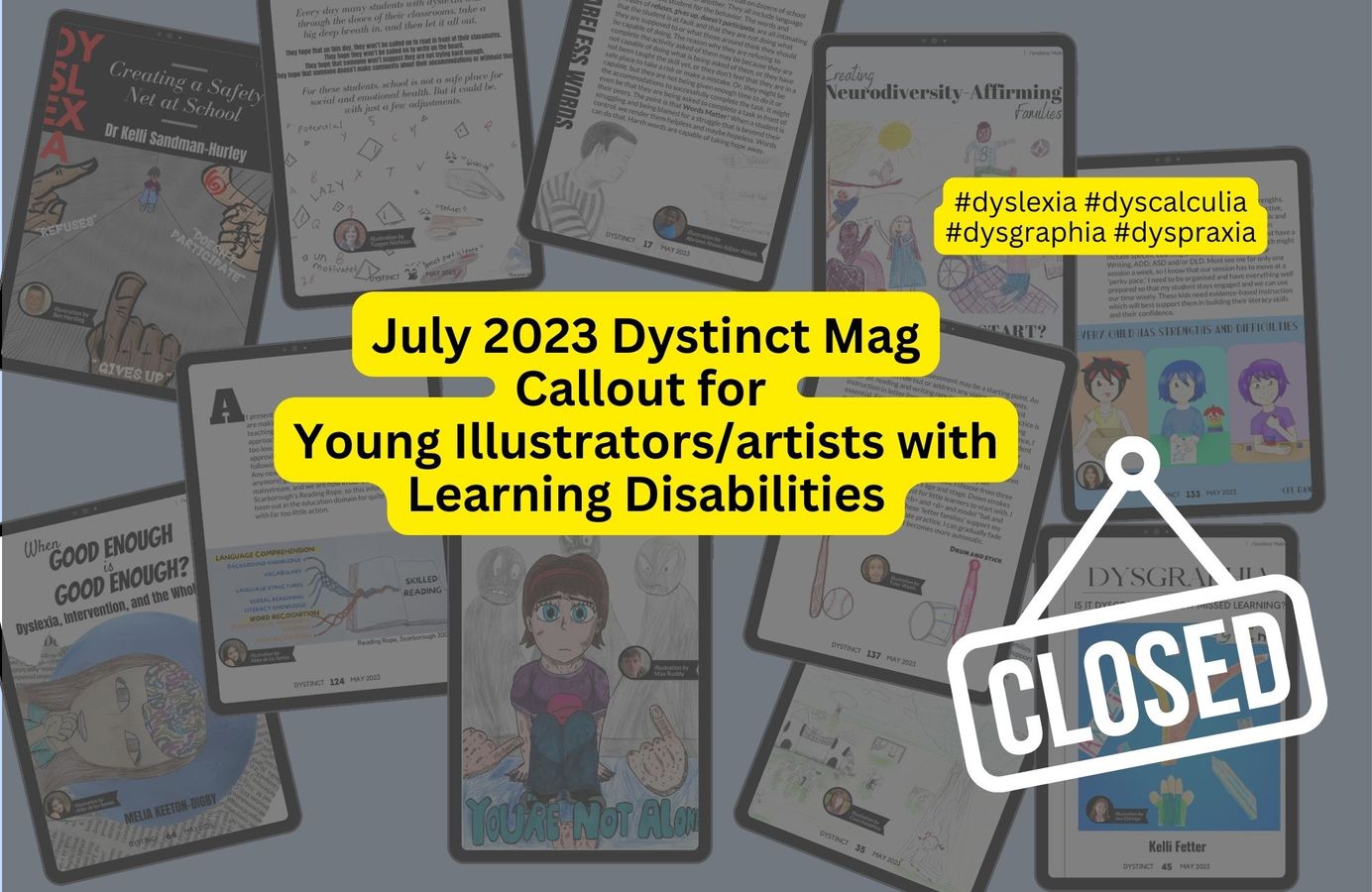
Issue 16: Illustration Callout for July 2023 Dystinct Magazine
In every magazine issue, articles written by specialists are accompanied by illustrations created by children. Check out the list of open available opportunities now and submit your child's illustrations for a chance to be featured in the Dystinct Magazine.
Table of Contents
Callouts for illustrations to be featured in the upcoming July 2023 issue of the Dystinct Magazine
Instructions to submit the illustrations are at the bottom. If you have any questions, please get in touch with me at hello@dystinct.org.
Callout 1 - Giftedness
- Article Topic: A Cautionary Tale of Three Testing Issues
- Article Context: This article discusses problematic issues with the WISC-V intelligence test and its impact on assessing gifted children, specifically focusing on processing speed, working memory, and verbal comprehension measures.
- Illustration Theme: Giftedness
Illustration Guideline:
- Children can feel free to create an illustration as per their creativity.
- If you require a guideline, you can create an illustration of a child with a tree growing from his/her head and the spreading branches of the tree, all showing a different symbol to represent the various interests and skills that gifted children may possess.
Callout 2 - Educational trauma is felt by both children and their parents
- Article Topic: From Outrage to Recognition: Educators Confront the Reality of Parental Trauma in Education
- Article Context: The author highlights the existence and impact of educational trauma on both children and parents and calls for recognition, support, and changes within educational institutions to create a more inclusive and compassionate environment.
- Illustration Theme: Educational trauma is felt by both children and their parents
Illustration Guideline:
- Children can feel free to create an illustration as per their creativity.
- If you require a guideline, you can create an illustration of a parent and child standing together, facing a large and imposing educational institution or building. The parent can be shown holding a sign or speaking up, representing their advocacy for their child's rights. Both the parent and child can have concerned or determined expressions on their faces. The illustration can also include thought bubbles with images or words representing the challenges they face, such as barriers, question marks, or obstacles, to convey the idea of their struggle within the educational system.
Callout 3 - Interconnection between dyslexia, anxiety and unresolved trauma in families
- Article Topic: Dyslexia and Anxiety - Our Family Journey
- Article Context: The author, who has a son with dyslexia, dyscalculia and dysgraphia, delves into the interconnections between dyslexia, anxiety, stress, and unresolved trauma in her family, emphasising the impact on learning and well-being while providing valuable insights and support tips for parents of dyslexic children.
- Illustration Theme: Interconnection between dyslexia, anxiety and unresolved trauma in families
Illustration Guideline:
- Children can feel free to create an illustration as per their creativity.
- If you require a guideline, you can create an illustration of a family consisting of an anxious-looking dad, mum, and boy. They can depict threads or lines emanating from their bodies and becoming entangled in a web-like pattern surrounding them.
Callout 4 - Dyslexic brains learn differently. You are not stupid or dumb for being dyslexic.
- Article Topic: Dyslexia and Anxiety - Our Family Journey
- Article Context: The author, who has a son with dyslexia, dyscalculia and dysgraphia, delves into the interconnections between dyslexia, anxiety, stress, and unresolved trauma in her family, emphasising the impact on learning and well-being while providing valuable insights and support tips for parents of dyslexic children.
- Illustration Theme: Dyslexic brains learn differently. You are not stupid or dumb for being dyslexic.
Illustration Guideline:
- Children can feel free to create an illustration as per their creativity.
- If you require a guideline, you can create an illustration of loving parents standing alongside a boy with thought bubbles above his head containing positive affirmations or empowering messages.
Callout 5 - Asking who, what, when, and where questions while reading a passage
- Article Topic: Meta-cognition and Comprehension Strategies for Dyslexic/Struggling Readers
- Article Context: The author emphasises the crucial role of meta-cognition in enhancing reading comprehension for dyslexic and struggling students and provides practical strategies that focus on teaching students how to think critically while reading, empowering them to become thoughtful thinkers as well as skilled readers.
- Illustration Theme: Asking who, what, when, and where questions while reading a passage.
Illustration Guideline:
- Children can feel free to create an illustration as per their creativity.
- If you require a guideline, you can create an illustration of a child reading from a book and thinking of who, what, when and where questions in their head.
Callout 6 - The importance of meta-cognition (thinking about your own thinking)
- Article Topic: Meta-cognition and Comprehension Strategies for Dyslexic/Struggling Readers
- Article Context: The author emphasises the crucial role of meta-cognition in enhancing reading comprehension for dyslexic and struggling students and provides practical strategies that focus on teaching students how to think critically while reading, empowering them to become thoughtful thinkers as well as skilled readers.
- Illustration Theme: The importance of meta-cognition (thinking about your own thinking)
Illustration Guideline:
- Children can feel free to create an illustration as per their creativity.
- If you require a guideline, you can create an illustration of a boy or a girl sitting with a book, surrounded by a thought bubble above their head. Inside the thought bubble, they can depict gears or mechanical cogs turning, symbolising the process of thinking and learning.
Callout 7 - Creating mental pictures/ visualisation while reading
- Article Topic: Meta-cognition and Comprehension Strategies for Dyslexic/Struggling Readers
- Article Context: The author emphasises the crucial role of meta-cognition in enhancing reading comprehension for dyslexic and struggling students and provides practical strategies that focus on teaching students how to think critically while reading, empowering them to become thoughtful thinkers as well as skilled readers.
- Illustration Theme: Creating mental pictures/ visualisation while reading
Illustration Guideline:
- Children can feel free to create an illustration as per their creativity.
- If you require a guideline, you can create an illustration of a child reading from a book with a colourful image of the story playing above their head.
Callout 8 - Learning Hebrew
- Article Topic: Unlocking the Potential of Dyslexic Learners: One Mother's Approach to Bat Mitzvah Preparation
- Article Context: The author highlights the importance of individualised education in her home schooling journey, where she utilised customised strategies to enhance her daughter's Hebrew reading and comprehension skills for her Bat Mitzvah preparation.
- Illustration Theme: Learning Hebrew
Illustration Guideline:
- Children can feel free to create an illustration as per their creativity.
- If you require a guideline, you can create an illustration of a child confidently reading from the Torah during their Bat Mitzvah, symbolising their journey and achievement in Hebrew reading.
INSTRUCTIONS
Instructions for creating illustrations:
- If your child can create digital drawings, that would be preferred. If not, illustrations on paper will suffice. (If your child can create a digital illustration please let me know about the software/platform that they will be using to create the file).
- Please create/draw/colour on an A4 sheet of WHITE paper.
- Scan the image and send us a clear image of the illustration without shadows. Please do not take a photograph using flash on your mobile device.
Instructions for submitting your illustrations:
Please email me your submissions to hello@dystinct.org with the following info:
- Short bio- 25-50 words
- Name of Child
- Age
- Location (City/Country)
- Diagnosis/suspected diagnosis
- 1-2 high-resolution headshots/ photos of the child
Illustrations featured in previous issue of Dystinct Magazine
The below illustrations were featured in May 2023 Issue of Dystinct Mag
